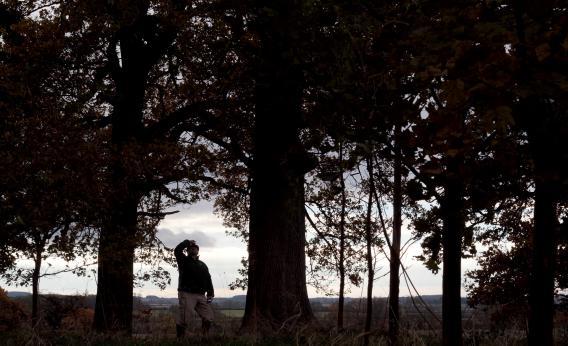CHEDISTON, England — When it came, the invasion was silent. Insidiously, its vanguard arrived in plain sight, indistinguishable from the native population. It spread over farmlands, across valleys and especially into the precious remaining forests, killing slowly and quietly.
Long before England had a queen — even long before England existed — the Angles and the Saxons hewed spears and hunting bows from the vast stands of ash trees that once blanketed much of this island. Along with the English oak, the ash supported bridges, powered mill wheels and reinforced the hulls of the Royal Navy ships that for centuries kept Spanish, French and German enemies from invading.
The ash is the fourth-most common species today and beloved by millions for its beauty. But it appears to be doomed thanks to the importation of tens of thousands of Dutch and Danish ash trees afflicted by Chalara fraxinea, an incurable blight that strangles the tree by covering its leaves with fungus.
It’s also having a political effect.
“Ashes to ashes,” lamented Richard Walker, surveying one of the two dying giants that shade his 500-year-old farmhouse in this bucolic village 100 miles northeast of London. Walker is hardly a Euro-skeptic, as opponents of Britain’s ties with the continent are known. But with Europe’s star very diminished of late thanks to the euro crisis, the ash blight may push some like him over the edge.
“People here knew Danish trees were infected, but they kept importing them,” he said. “There should have been some control.”
Possibly the most serious agricultural crisis in Britain since mad cow disease in the 1980s, the outbreak could destroy most of the UK’s 90 million ash trees, according to the Woodland Trust, a forestry group. British agricultural experts say it almost certainly originated in a similar blight that killed most of Denmark’s ash trees in the last decade.
The reactions in Britain, where centuries of industrialization and shipbuilding have left only a fraction of the island’s native forests intact, have been positively apocalyptic.
“KILLER FUNGUS COULD KILL ONE THIRD OF OUR TREES!” screamed the Daily Mail.
The Anglican Bishop of Liverpool prayed for divine intervention to save this “green and pleasant land.”
And, perhaps predictably, The Telegraph — a newspaper that supports the current Conservative-led government — reported “Labour ministers blamed over research funding cuts.”
The looming crisis has prompted talk about the need to invest in “biosecurity,” the evils of globalization and new calls from some within the government to review Britain’s involvement in the EU.
Read the rest on GlobalPost
